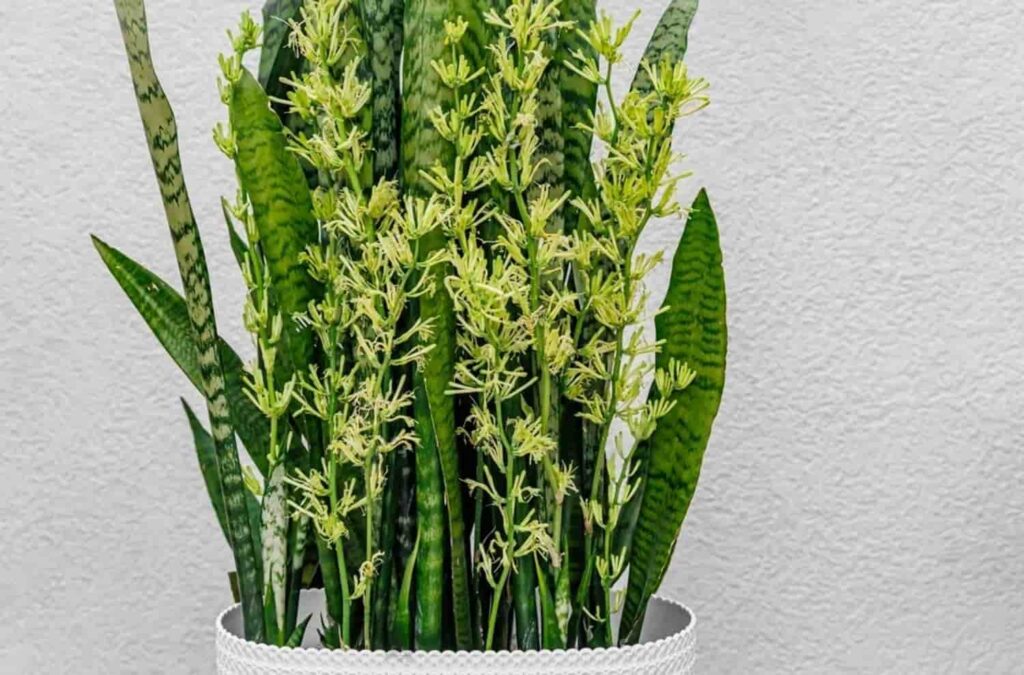Last updated on May 20th, 2025 at 11:53 am

The snake plant, otherwise known scientifically as Sansevieria, is one of the most popular and resilient houseplants around. Its striking, upright leaves and ability to thrive under various conditions are just two reasons why people have been drawn to this fascinating plant across the globe. Whether you are an experienced gardener or just starting, this hardy plant offers several benefits, making it a valuable addition to your home or office. In the following blog, we will review the benefits of a snake plant, how to grow a snake plant, and even the many types and usages of this incredible plant.
What is a Snake Plant ?
The snake plant, or mother in laws tongue, belongs to the Sansevieria genus and is native to West Africa. This plant has its characteristics of long sword-shaped leaves that usually sport striking edges in green and yellow. It is considered one of the most forgiving plants that can survive on minimal attention, making it an excellent choice for beginners and busy individuals alike.
Snake Plant Benefits: Why You Should Grow One
1. Air Purification
One of the snake plant benefits is that it helps purify the air. It has been proven by NASA to help filter toxins like formaldehyde, benzene, and xylene from the air. This makes it an ideal plant for improving indoor air quality, especially in environments with limited ventilation, such as bedrooms, offices, and living rooms.
Additionally, unlike most plants that release oxygen during the day, the snake plant continues to purify the air and release oxygen at night, making it a great companion for sleep. This quality has earned it a reputation as an oxygen generator.
2. Low Maintenance
Another important advantage of the snake plant is that it doesn’t need much maintenance. This plant will thrive in light conditions that range from bright indirect light to low light. Moreover, the plant is tolerant of drought and can be left unwatered for long periods of time, ideal for a person who does not have the green thumb or forgets to water the plants for a long period.
3. Stress Relief
Research has indicated that the presence of plants decreases stress and increases general well-being. The snake plant is an elegant plant with its smooth, green leaves. Plants like the snake plant add a sense of serenity to your home and promote relaxation, which is vital for your mental and emotional health.
4. Increased Humidity
Snake plant is an excellent natural humidifier. As the plant releases moisture into the air through transpiration, it is helpful in raising the level of humidity, especially within dry indoor spaces. It is most useful during cold months when the heating systems tend to dry out the air, resulting in a dry skin, irritated sinuses, and scratchy throat.
Snake Plant Flower: The Surprise Beauty
While the snake plant flower is very rare, you can have a pretty unique surprise if your plant is healthy enough. Snake plant flowers are small and tubular, with the color white or cream, that grow in tall stalks, emerging from the bottom of the plant at night. These flowers are fragrant though, and since it’s so rare, it is an added charm to this already very stunning plant.
If you’re lucky enough to see your Sansevieria plant bloom, it’s a sign that your plant is thriving. However, don’t worry if your snake plant doesn’t flower—this isn’t essential for enjoying all the other snake plant benefits.

Types of Snake Plants
There are several types of snake plants, each with its unique look and characteristics. Some of the most popular varieties include:
- Sansevieria Trifasciata (Mother in laws tongue) – the well-known snake plant, has straight, green leaves with yellow or light green borders
- Sansevieria Laurentii – the same shape and size as the Trifasciata but with sharper margins of yellow
- Sansevieria Cylindrica (African spear plant) – This one comes in a tight cluster of round, cylindrical leaves.
- Sansevieria Moonshine – This one has pale, silvery-green leaves that give a soft, light effect in any space.
- Sansevieria Hahnii (Bird’s Nest Sansevieria) – A small compact variety with rosette-shaped growth.
Each type of snake plant has a different visual appeal, so you can choose one that fits your space and aesthetic.
How to Grow Snake Plant
Growing a snake plant is very easy, but a few important steps must be taken to make sure it’s a success :
- Light Requirement : Snake plants like bright, indirect light, but can thrive in low light. They are excellent for homes and offices that do not get much natural light.
- Watering : The biggest mistake people make with snake plants is overwatering. Water only when the soil is completely dry. Water very sparingly during winter months when it is not growing.
- Soil and Pot : Select a well-draining soil for your snake plant. A cactus or succulent mix is best. Make sure the pot has holes at the bottom to prevent the water from collecting there. This may cause root rot.
- Temperature : Snake plants love warmer temperatures and need to be kept between 60°F and 85°F (15°C – 29°C). Do not expose them to cold drafts or places that go below 50°F (10°C).
- Fertilizing : Fertilize the plant every few months during the growing season (spring and summer) using a balanced, diluted fertilizer.
Snake Plant Uses : More Than Just a Pretty Face
Aside from its aesthetic value, the snake plant has several uses. These include :
- Natural Air Freshener: As explained above, snake plants purify the air by removing dangerous chemicals. Therefore, they can be an excellent addition to any indoor space for a fresher, cleaner environment.
- Aesthetic Appeal: Snake plants’ striking appearance attracts people to consider them a good option in interior design, either as potted plants from a small container on some shelf or huge containers which make them serve as more of a centerpiece.
- Gift : A little snake plant is a great gift to the gardening enthusiast, especially those with a little experience in growing plants. It is perfect for the most diverse occasion due to its resilience and easy maintenance.
Conclusion
Snake plants are more than just houseplants that don’t demand much care-they come with several benefits, including air purifying, reducing stress, and improving humidity. With its beautiful leaves and only occasional flowers, the Sansevieria plant is lovely and practical. You have options from the classic mother-in-law’s tongue to small snake plants or many others-they all give you hardy, attractive plants requiring less care. So why not go ahead and add one snake plant to your house for all the benefits you would enjoy?
With its versatility and charm, the snake plant is a great choice for anyone looking to add a touch of nature into their indoor space.
FAQs on Snake Plant Benefits
1. What are the air-purifying benefits of a snake plant?
Snake plants are said to remove harmful toxins from the air, such as formaldehyde, benzene, and xylene. This contributes to healthier indoor air quality. Thus, it makes them a great fit for bedrooms, offices, and living rooms.
2. How does a snake plant help in sleep?
Contrary to many other plants, snake plants continuously produce oxygen during nighttime; therefore, they have great value in improving air quality for individuals during their sleep hours, thereby enhancing rest time with minimal sleep disturbances. With air-purifying attributes, they are ideal to facilitate creating a serene, refreshing ambience.
3. Is a snake plant a low-maintenance plant?
Yes, snake plants are very low-maintenance. They can thrive in a variety of lighting conditions, require minimal watering, and can survive neglect. This makes them perfect for busy people or beginners.
4. Can a snake plant improve indoor humidity?
Yes, snake plants do release moisture into the air through transpiration. They increase humidity, which is advantageous in dry indoor environments during the winter months. They prevent dry skin and other respiratory problems.